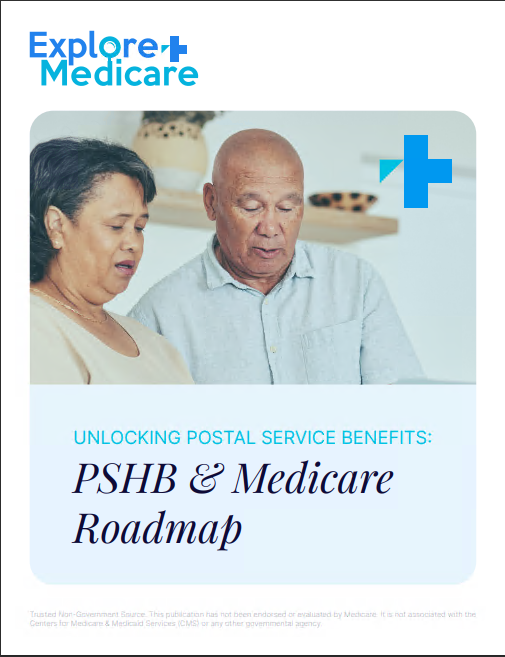Determining whether the Postal Service Health Benefits (PSHB) program will cost more than the Federal Employees Health Benefits (FEHB) program entails a comprehensive analysis of various factors. While both programs aim to provide comprehensive healthcare coverage for USPS employees and retirees, evaluating their respective costs requires examining premiums, deductibles, copayments, coinsurance, and other financial aspects. Understanding the nuances of PSHB and FEHB can help individuals make informed decisions about their healthcare coverage options.
Comparing Premiums: PSHB vs. FEHB
- Premium Structures: PSHB and FEHB offer different premium structures, with PSHB being a separate program within the FEHB framework. The premiums for PSHB plans may vary based on factors such as coverage level, plan type, and geographic location.
- PSHB Premium Considerations: PSHB premiums may be influenced by the Postal Service Reform Act of 2022 (PSRA) and subsequent regulatory changes. Factors such as inflation, healthcare utilization trends, and program administration costs could impact PSHB premiums.
- FEHB Premium Comparisons: FEHB premiums are determined by the Office of Personnel Management (OPM) and may vary annually based on factors like healthcare costs, plan performance, and regulatory requirements.
- Understanding Premium Differences: Analyzing premium differences between PSHB and FEHB plans is essential for beneficiaries to assess affordability and value. While one program may offer lower premiums initially, it’s crucial to consider the overall cost-effectiveness of coverage, including out-of-pocket expenses and benefits.
Evaluating Deductibles and Out-of-Pocket Costs
- Deductible Structures: Both PSHB and FEHB plans may have deductibles, which represent the amount beneficiaries must pay out-of-pocket before their insurance coverage begins.
- PSHB Deductible Considerations: PSHB deductibles may vary among plans and coverage options. Beneficiaries should review plan documents carefully to understand deductible amounts and any applicable exceptions or limitations.
- FEHB Deductible Comparisons: FEHB plans also feature deductibles, which can differ based on plan type and coverage level. Understanding FEHB deductible structures is crucial for beneficiaries to anticipate healthcare costs and budget accordingly.
- Assessing Out-of-Pocket Expenses: In addition to deductibles, beneficiaries should consider other out-of-pocket expenses such as copayments, coinsurance, and annual maximums when comparing PSHB and FEHB plans.
Understanding Copayments and Coinsurance
- Copayment Structures: Copayments represent fixed amounts that beneficiaries pay for specific healthcare services, such as doctor visits, prescriptions, or hospital stays.
- PSHB Copayment Considerations: PSHB plans may feature varying copayment structures depending on the plan type and coverage level. Understanding copayment amounts and requirements is essential for beneficiaries to plan for healthcare expenses.
- FEHB Copayment Comparisons: Similarly, FEHB plans may require copayments for healthcare services, with amounts varying based on plan design and benefit levels.
- Assessing Coinsurance: Coinsurance represents a percentage of healthcare costs that beneficiaries are responsible for after meeting deductibles. Evaluating coinsurance rates for PSHB and FEHB plans can provide insights into potential cost-sharing obligations.
Considering Additional Cost Factors
- Prescription Drug Coverage: Both PSHB and FEHB plans may include prescription drug coverage, with beneficiaries responsible for copayments or coinsurance for medications. Evaluating formularies and cost-sharing arrangements is essential for assessing prescription drug costs under each program.
- Provider Networks: Beneficiaries should consider provider networks when comparing PSHB and FEHB plans, as out-of-network services may result in higher out-of-pocket costs. Understanding network limitations and coverage restrictions can help individuals make informed decisions about their healthcare providers.
- Benefit Design: Differences in benefit design, such as coverage for preventive care, specialist visits, and hospitalization, can impact overall healthcare costs. Analyzing plan benefits and coverage limitations is crucial for understanding the value proposition of PSHB and FEHB plans.
Conclusion: Making Informed Decisions
Determining whether PSHB will cost more than FEHB requires a thorough examination of various cost factors, including premiums, deductibles, copayments, coinsurance, prescription drug coverage, provider networks, and benefit design. While PSHB and FEHB offer comprehensive healthcare coverage for USPS employees and retirees, beneficiaries must assess affordability, value, and individual healthcare needs when selecting a plan. By understanding the cost implications of both programs, individuals can make informed decisions that align with their financial goals and healthcare preferences.
Ready to explore your healthcare coverage options under PSHB or FEHB? Connect with Postal Service HR departments, benefits specialists, or licensed insurance agents for personalized guidance on selecting the right plan for your healthcare needs and budget. Make informed decisions about your healthcare coverage and ensure financial security with the program that best suits your needs.

